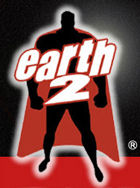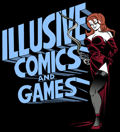|
When
Marvel Was Timely: The Big Three
From
Once Upon A Dime.com...
The king
of Atlantis. A robot who could burst into flames. And America’s
first super-soldier. The Sub-Mariner, the Human Torch and
Captain America were by far the most popular heroes to emerge
from Timely Comics in the 1940s. Timely, which would in the
1960s become known as Marvel Comics, was a second-tier publisher
during World War II. Their line consisted of a number of second-rate
characters, as mentioned in my earlier article “Timely
Seconds”; only the big three characters really captured
the imagination of the comics fans of the era. The big three
Timely characters were unique and exciting creations, graced
with art that was generally better than what was normal in
the era, and full of vibrant action.
No character
better exemplified the dynamic style of 1940s Marvel than
Captain America. As originally drawn by the legendary team
of Joe Simon and Jack Kirby, Cap and his young partner Bucky
fought endless battles against Nazi saboteurs and the evil
Red Skull. Captain America’s origin is well-known by
most comics fans. Milquetoast Steve Rogers, too scrawny and
weak to join the military in the days before World War II,
volunteers to be bombarded by the mysterious vita-rays and
be transformed into America’s first super soldier. Immediately
after getting his vita-ray treatment, Rogers sees their inventor,
Dr. Reinstein, killed by a Nazi spy. Avenging Reinstein’s
death by throwing the spy onto the exploding vita-ray generator,
Rogers dons the star-spangled uniform of Captain America in
order to fight the Nazi evil wherever it may rise. Soon Rogers
is inducted into the Army, where the young camp mascot Bucky
Barnes discovers his identity. Those being more innocent times,
Cap enlists Bucky as his fighting partner, who would fight
at Cap’s side against endless groups of Nazis and the
evil Red Skull.
The Skull,
of course, would end up being Cap’s greatest enemy after
his revival in the 1960s, but his earliest appearances were
the spookiest. Simon and Kirby depicted the Skull as a malevolent
glowing beet-red spirit of Nazi evil. Always playing Chopin’s
Funeral March as he attacked the forces of good, the Red Skull
was seemingly intelligent and comprehensive in his plans,
making the character seem far more evil than he would under
his Silver Age creators.
Cap and
Bucky were perhaps the most popular of all the many great
creations of the Simon & Kirby team in the Golden Age
and it’s easy to see why. Kirby’s art has long
been synonymous with action and excitement, and in the adventures
of Cap, Kirby may have hit his Golden Age apex. Action seemed
to explode out of every panel.
Equally
as memorable as Cap and Bucky was the mysterious Namor, the
Sub-Mariner, king of Atlantis. As created and sumptuously
drawn by Bill Everett, Namor was unique among other "heroes"
of the time. He was regal and imperious, an avenging spirit
seeking vengeance against the evils done to Atlantis by the
dwellers on the surface world. In his earliest appearances,
the Sub-Mariner was a marauding super-human spirit of vengeance,
loosing his anger at New York City and other large American
cities.
As the
Second World War approached, Namor changed to the side of
the Allies. Most of his stories from that era depicted the
Sub-Mariner battling the Nazi menace.
Everett's
art was some of the finest of any artist in the Golden Age.
His angular linework and lively rendering helped make the
Sub-Mariner into one of the most exotic of all the Golden
Age heroes. Few artists have been as successful as Everett
at depicting undersea scenes; the setting really comes alive
under his penciling.
The final
of the big three is the Human Torch. Ironically, the Torch
isn’t actually a human, but is actually a robot (or
“a synthetic man” as he’s described in his
first appearance) created by the genius Professor Horton.
The robot is perfect in every way, except for one flaw: when
exposed to the air, it bursts into flame. When this fearsome
flaw is discovered, it’s decided to encase the Torch
in a steel tube and bury him in the ground. That works until
an explosion happens near the tube and the Torch escapes,
inadvertently creating a trail of terror. Finally, he encounters
a gangster and defeats him, in the progress of the battle
learning how to control his flame.
Almost
more the script of a horror movie than the template for an
action hero, it’s a unique and interesting origin. Later
on the Torch would take on a civilian identity with the New
York Police Department. He would also bring in his own teen
companion, Thomas Raymond, or “Toro,” who was
a former circus performer who also was able to burst into
flame and fight evil-doers.
Artist
Carl Burgos was nowhere near the level of Everett or Simon
and Kirby. The first Human Torch story in Marvel Comics #1,
in fact, contains strikingly amateurish artwork. But Burgos
improved over the years and eventually became quite competent
at depicting action scenes. Besides, the visual of a man on
fire fighting crime or Nazis was always an exciting image.
For
the full article, visit Once
Upon A Dime.com...
For
more articles by Jason Sacks, check out his
personal web site.
|






